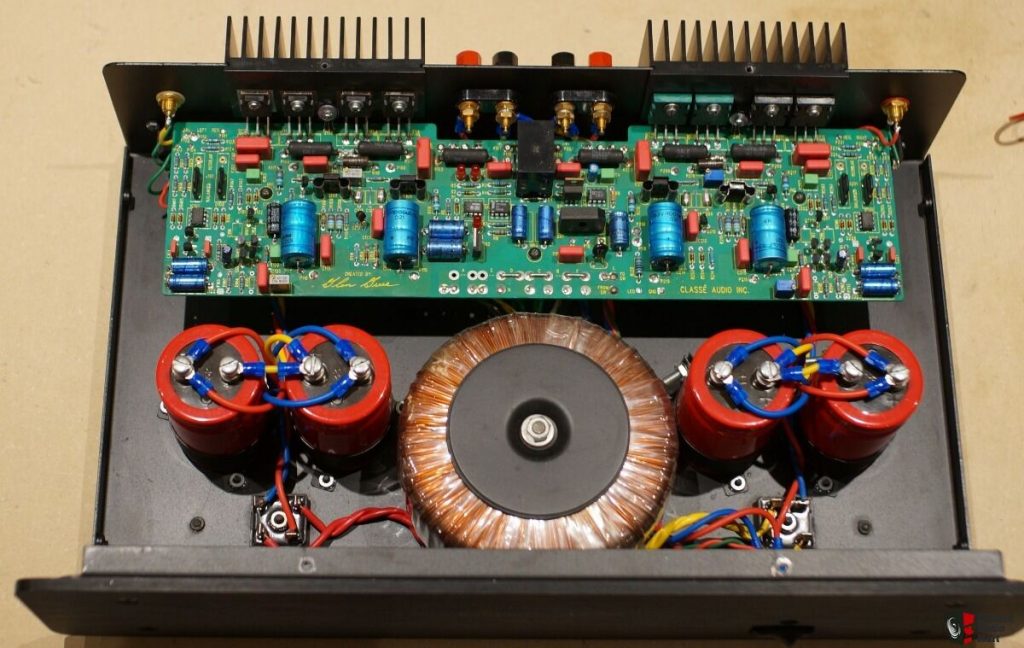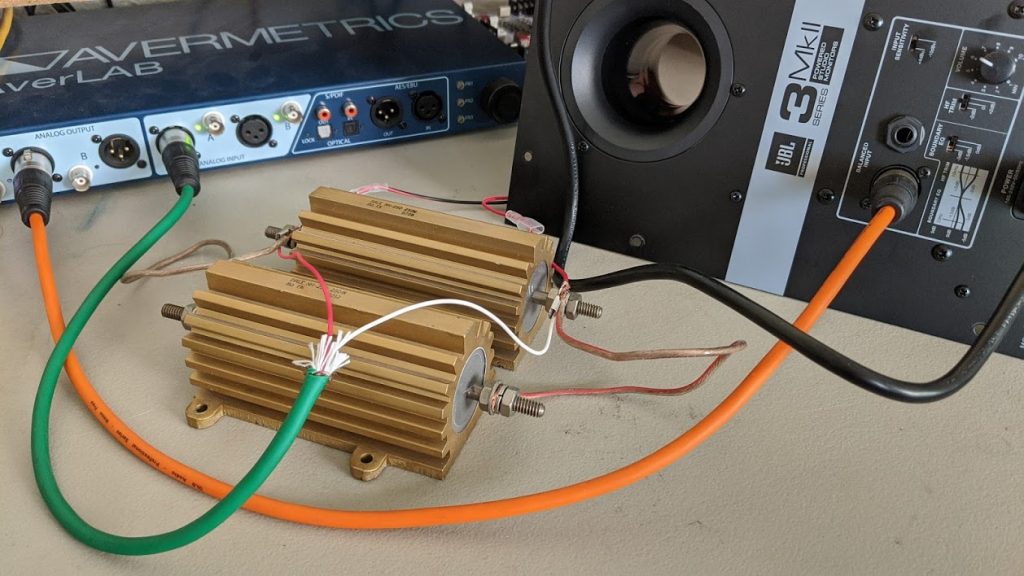Audio Science Review
Audio Science Review is a website and online community dedicated to in-depth reviews, measurements, and analysis of audio equipment such as amplifiers, speakers, headphones, DACs (Digital-to-Analog Converters), and other audio-related devices.
The site is known for its data-driven approach, providing detailed measurements and objective analysis of audio equipment’s performance characteristics. Reviews on Audio Science Review often include:
- Measurements: Detailed measurements of audio devices, including frequency response, distortion levels, signal-to-noise ratio, power output, and other technical aspects that impact sound quality.
- Objective Analysis: Reviews focus on objective assessments based on measurements rather than subjective impressions, aiming to provide a scientific evaluation of audio equipment.
- Comparisons: Equipment is often compared to others within the same category or price range, allowing users to understand how different products stack up in terms of performance.
- Discussion Forums: The site hosts forums where users and audio enthusiasts can discuss various audio-related topics, share experiences, and seek advice on equipment purchases.

The approach of Audio Science Review appeals to users who prioritize technical specifications and objective data when evaluating and comparing audio equipment. However, it’s essential to note that while measurements provide valuable insights, personal preferences and subjective experiences also play a significant role in choosing audio equipment, as the perceived quality of sound can vary from person to person.
What is audio science review?
Audio Science Review (ASR) is a comprehensive online platform and community focused on objective testing, measurement, and analysis of audio equipment. It conducts detailed and scientific assessments of various audio devices, including amplifiers, speakers, headphones, digital-to-analog converters (DACs), and other audio components.
ASR emphasizes the use of objective measurements and rigorous testing methodologies to evaluate the technical performance and characteristics of audio equipment. By conducting thorough measurements and analyses, the platform aims to provide consumers, audio enthusiasts, and professionals with reliable and unbiased information about the capabilities, strengths, and weaknesses of different audio products.
The reviews and analyses published on Audio Science Review cover a wide range of aspects related to audio quality, technical specifications, frequency response, distortion levels, signal-to-noise ratios, and more. These detailed measurements help users make informed decisions when selecting audio equipment by understanding the objective performance metrics beyond subjective opinions or marketing claims.
ASR’s approach, focusing on empirical data and technical measurements, aims to provide a deeper understanding of audio equipment’s performance, contributing to the informed decision-making process for individuals seeking high-quality audio experiences.
What is the meaning of audio science?
Audio science refers to the scientific study, analysis, and understanding of sound, its properties, transmission, perception, and reproduction. It encompasses various disciplines within science and engineering that delve into the physics, acoustics, electronics, and psychology related to sound and audio systems.
Key aspects of audio science include:
- Acoustics: The study of sound waves, their propagation, behavior in different environments, and how they interact with surfaces and structures.
- Electroacoustics: The branch of engineering that deals with the design, development, and analysis of electrical devices used in audio systems, such as microphones, speakers, amplifiers, and other audio equipment.
- Psychoacoustics: The study of how humans perceive and interpret sound, including the psychological and physiological factors that influence our perception of sound quality, loudness, pitch, and spatial characteristics.
- Signal Processing: The manipulation, analysis, and processing of audio signals using digital techniques to improve audio quality, remove noise, or enhance specific characteristics.
- Measurement and Testing: The use of scientific instruments and methodologies to measure and evaluate various parameters of audio signals, devices, and systems, such as frequency response, distortion, signal-to-noise ratio, and more.
Audio science is essential in developing high-quality audio systems, designing acoustic spaces, improving sound reproduction technologies, and understanding how humans perceive and experience sound. It forms the foundation for advancements in audio engineering, equipment design, and the overall improvement of audio technology and experiences.
Is audio research high end?
Yes, audio research often falls within the realm of high-end or high-fidelity audio. High-end audio refers to audio equipment, systems, and technologies that aim to reproduce sound with exceptional quality, precision, and fidelity, often appealing to audiophiles and enthusiasts who prioritize superior sound reproduction.
Audio research conducted in the high-end audio domain involves studying, developing, and refining audio technologies, components, and systems that strive for the highest possible sound quality. This research may encompass areas such as:
- Component Design: Researching and designing high-quality audio components such as amplifiers, speakers, DACs (digital-to-analog converters), and other audio equipment to achieve superior performance.
- Signal Processing: Developing advanced signal processing techniques and technologies aimed at enhancing audio signals, reducing distortion, improving clarity, and preserving fidelity.
- Acoustic Engineering: Exploring acoustics and room treatments to optimize sound reproduction in different environments, considering factors like room resonance, reflection, and absorption.
- Psychoacoustics: Studying how humans perceive sound and utilizing this understanding to design audio systems that cater to human auditory preferences and perceptions.
- Measurement and Analysis: Conducting rigorous measurements, testing, and analysis of audio equipment to assess various parameters such as frequency response, distortion, signal-to-noise ratio, and more.
High-end audio research often focuses on pushing the boundaries of audio technology, striving for the most accurate and realistic reproduction of sound, and catering to individuals seeking the utmost fidelity and quality in their audio experiences. These efforts can lead to the development of cutting-edge audio systems that offer exceptional performance but may also come with higher costs due to the use of premium components and advanced engineering.
What is audiophile audio quality?
Audiophile audio quality refers to a high standard of sound reproduction that aims for exceptional fidelity, accuracy, and purity in audio playback. Audiophiles are individuals who are particularly passionate about achieving the highest possible quality of sound reproduction in their audio systems.
Key characteristics of audiophile audio quality include:
- High Fidelity: Audiophile-grade audio systems strive to reproduce sound as faithfully and accurately as possible to the original recording, minimizing distortion, coloration, or alteration of the audio signal.
- Clarity and Detail: The audio reproduction should present intricate details and nuances within the music or sound recording, allowing the listener to perceive subtle elements that contribute to a more immersive experience.
- Dynamic Range: Audiophile systems aim to handle a wide dynamic range, accurately reproducing both the softest and loudest parts of the music without distortion or loss of detail.
- Transparency: Audiophile-quality systems seek transparency in audio reproduction, meaning that the sound system should not add its character or coloration to the original recording but rather faithfully reproduce what was captured.
- Balanced Sound: Achieving a balanced frequency response across the entire audible spectrum is crucial. This ensures that neither the bass, midrange, nor treble frequencies dominate, providing a well-balanced and natural sound reproduction.
Audiophile-grade systems often involve carefully selected high-quality components, including amplifiers, speakers, DACs (digital-to-analog converters), cables, and sometimes acoustic treatments. Audiophiles pay meticulous attention to system setup, room acoustics, and the quality of the source material (such as high-resolution audio files or vinyl records) to extract the best possible sound quality from their setups.
Audiophile audio quality is subjective to some extent and can vary based on individual preferences and the listener’s perception of what constitutes an ideal sound. However, it generally revolves around the pursuit of the most accurate and pleasing reproduction of sound.
What is an example of sound science?
An example of sound science in the field of audio could be the study and analysis of psychoacoustics, specifically examining how humans perceive and interpret sound.
Psychoacoustics is a branch of science that delves into the psychological and physiological aspects of sound perception. This field aims to understand how our auditory system processes sound waves, how our brain interprets different frequencies, volumes, spatial cues, and other characteristics of sound.
An example of sound science within psychoacoustics could involve research into the perception of sound localization. Scientists may conduct experiments to understand how humans discern the direction or location of sound sources in space. This research could involve investigating factors such as interaural time differences (the slight time delay in sound arrival between our ears), interaural level differences (differences in sound pressure between ears), and spectral cues to determine how our brain processes these cues to localize sounds.
By conducting controlled experiments, collecting empirical data, and analyzing human perception of sound, scientists contribute to our understanding of the intricate mechanisms behind how we perceive and interpret auditory information. This knowledge can have practical applications in various fields, including audio engineering, virtual reality, spatial audio design, and the development of more immersive audio experiences.

What is audio in simple words?
In simple terms, audio refers to the sound that we hear. It encompasses any type of sound, whether it’s music, speech, environmental noises, or any other auditory information that our ears can perceive.
Audio is created by vibrations that travel through the air or another medium, such as water or solids. When something vibrates, it causes air molecules to move back and forth, creating waves. These waves travel to our ears, where they are interpreted by our brains as sound.
Audio can be produced intentionally, like music played by instruments or voices speaking words, or it can occur naturally, such as the sound of birds chirping, the wind blowing, or water flowing in a stream.
Devices like microphones, speakers, headphones, and recording equipment are used to capture, reproduce, or manipulate audio, allowing us to listen to music, communicate through phone calls, watch movies with sound, or enjoy various audio experiences.
What is the science behind audio speakers?
The science behind audio speakers involves several key principles from physics, acoustics, electromagnetism, and engineering. Speakers are devices that convert electrical signals (audio signals) into sound waves that we can hear. Here are the fundamental components and concepts behind how speakers work:
- Electromagnetic Principles: Most speakers utilize an electromagnet called a voice coil. When an electrical audio signal passes through the voice coil, it interacts with a permanent magnet, creating a fluctuating magnetic field. This interaction causes the voice coil to move back and forth.
- Diaphragm or Cone: The voice coil is attached to a flexible diaphragm or cone made of materials like paper, plastic, or metal. As the voice coil moves, it pushes or pulls the diaphragm, causing it to vibrate and create sound waves.
- Sound Wave Generation: The movement of the diaphragm compresses and rarefies the air, producing sound waves that correspond to the electrical audio signal. These waves travel through the air and reach our ears, where they’re interpreted as sound.
- Frequency Response: The design and materials used in the speaker components, including the shape and size of the diaphragm, affect the speaker’s frequency response. This refers to the range of frequencies (bass, midrange, and treble) that the speaker can accurately reproduce.
- Enclosures and Acoustics: Speakers are often housed in enclosures or speaker cabinets. The design of the enclosure impacts the speaker’s performance by controlling resonance, improving bass response, and reducing unwanted vibrations or distortions.
- Crossover Networks: In multi-driver speakers (those with multiple drivers for different frequency ranges), crossover networks are used to direct the appropriate frequencies to the corresponding drivers (woofers, tweeters, etc.) for optimal sound reproduction.
The science of speakers involves precise engineering to create components that accurately convert electrical signals into mechanical vibrations, ultimately producing sound waves that faithfully reproduce the original audio signal. Advanced speaker designs and materials aim to minimize distortion, improve efficiency, widen frequency response, and deliver high-quality audio experiences.

Why is audio so expensive?
Audio equipment can get pretty pricey for a few reasons. Quality materials and engineering play a significant role; better components often mean a higher price tag. For instance, high-end speakers might use specialized materials that enhance sound quality but are costly to produce.
Research and development also factor in. Companies invest in innovation to create better sound, which adds to the overall cost. Plus, the market demand for premium audio drives prices up—audiophiles are often willing to pay more for top-notch quality.
Sometimes, branding and marketing contribute to the cost as well. Recognizable names in the industry may charge more for their reputation and perceived quality.
Ultimately, the expense can vary widely depending on the specific equipment and the level of quality and performance you’re seeking.
Who owns Audio Research?
As of my last update in January 2022, Audio Research Corporation, a manufacturer of high-end audio equipment, was owned by TWS Enterprises, LLC. Dave Gordon, the founder of the original company, sold Audio Research to TWS Enterprises in 2008. However, ownership can change over time, so it’s a good idea to verify the most current information in case there have been any updates or changes since then.



